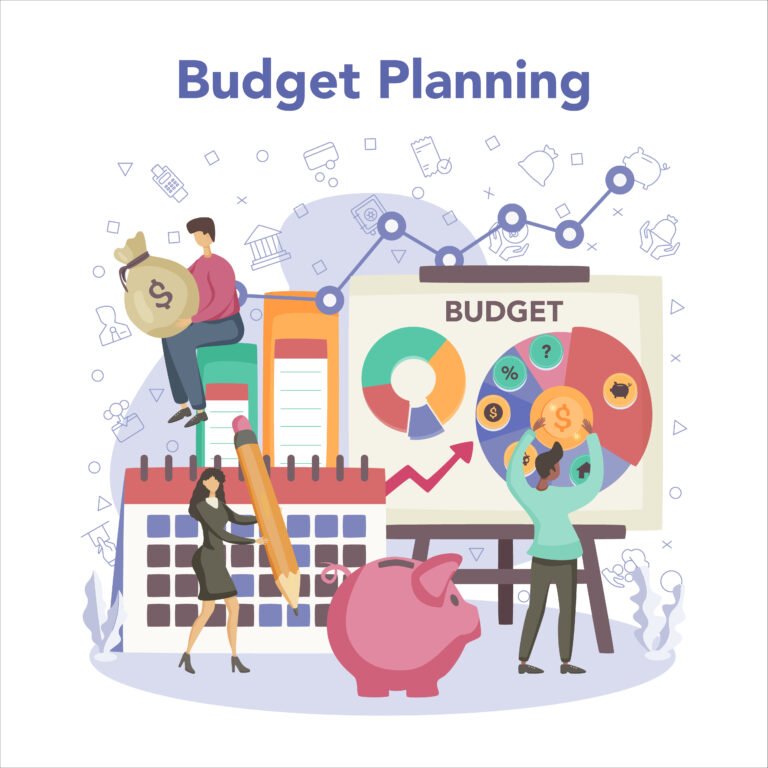💸 Why Loan Costs Are So Confusing
Loan Costs: At first glance, taking out a loan might seem simple: borrow money, make monthly payments, and pay it off. But if you’ve ever found yourself shocked by how much you actually pay over time, you’re not alone. The confusion often starts with the way lenders present costs. Let’s break it down clearly.

Table of Contents
📉 Interest Rate vs. APR: What’s the Difference?
Many borrowers assume the interest rate is the only number that matters. But in reality, the APR (Annual Percentage Rate) gives you a much clearer picture.
- The interest rate is just the cost of borrowing the principal, expressed as a percentage.
- The APR, on the other hand, includes interest plus additional fees (like loan origination or processing fees).
This means a loan with a 5% interest rate might actually have a 6.2% APR once everything is factored in. If you’re comparing loan offers, looking only at the interest rate can lead to a costly mistake.
🧾 Hidden Fees That Sneak Up on Borrowers
Lenders don’t always advertise all the costs upfront. Some common fees you might overlook include:
- Loan origination fees
- Processing charges
- Prepayment penalties
- Late payment fees
These charges can quietly add hundreds—or even thousands—of dollars to your total repayment. Always request a full fee breakdown before agreeing to any loan terms.
📆 Why Your “Monthly Payment” Isn’t the Full Picture
That tempting low monthly payment might not be the bargain it seems. A lower monthly payment usually comes with a longer loan term, which increases the total interest paid over time.
For example:
- A $10,000 loan over 3 years at 6% interest might cost you $1,000 in interest.
- Stretching it to 6 years lowers your monthly payment—but could cost $2,000+ in interest.
The monthly number is only part of the story. What you really want to ask is: How much will this loan cost me in total?
Breaking Down the Real Cost of a Loan
Understanding your loan means looking beyond surface numbers. Most people focus on the interest rate and monthly payment—but the real cost includes multiple factors that can quietly add up over time. Let’s break it down clearly so you know exactly what you’re signing up for.
🔢 How Lenders Calculate Interest Over Time
Not all interest is created equal. The way lenders calculate your interest affects how much you actually pay.
- Simple interest is calculated on the original loan balance.
- Compound interest (less common for loans but used in credit cards) grows faster since you’re charged on the balance plus accumulated interest.
- Amortized loans (like most car or personal loans) front-load interest, meaning more of your early payments go toward interest than principal.
This means in the early months of a loan, you’re barely chipping away at the original amount you borrowed. It’s not just about how much you borrow—it’s how long and under what structure.
⏳ The Role of Loan Term in Total Repayment
The loan term—or how long you take to repay—can drastically change your total cost.
- A shorter loan term (e.g., 3 years) has higher monthly payments but less interest overall.
- A longer term (e.g., 5 or 7 years) makes monthly payments smaller but adds more interest, making the loan far more expensive in the long run.
Here’s a quick example:
Borrowing $15,000 at 7% interest:
- 3-year term = ~$1,600 total interest
- 6-year term = ~$3,400 total interest
The longer you owe, the more it costs you—even if the payments feel easier month to month
🔄 Fixed vs. Variable Interest: Know What You’re Signing Up For
Your interest rate can either stay the same or fluctuate. This changes everything.
- Fixed-rate loans lock in your interest for the life of the loan. Your payments stay consistent.
- Variable-rate loans can change based on market conditions. You might start with a lower rate, but it can spike unexpectedly—especially in longer loans or volatile economies.
While variable rates may sound attractive initially, the risk is real. If rates rise, so does your monthly payment—and your total cost.
Common Myths That Cost You More
Loan marketing often focuses on what sounds good—not what’s financially smart. These common myths can lure borrowers into making costly decisions. Let’s bust them wide open so you don’t fall into the same traps.
💬 “Low Monthly Payments Mean It’s Affordable”
This is one of the most dangerous assumptions. A low monthly payment feels manageable—but it usually comes at a high long-term cost.
Here’s why:
Lenders can stretch your repayment over more years to lower the monthly number. But during those extra years, you’ll continue paying interest, which adds up fast.
Example: A $10,000 loan over 3 years at 6% interest = ~$300/month
Over 6 years, that payment may drop to $165—but you’ll pay nearly double the interest.
Don’t just ask: “Can I afford the monthly payment?”
Ask: “What’s the total amount I’ll repay by the end?
🆓 “Zero Down Is Always a Win”
Some loans advertise “zero down” as a selling point—especially with cars or large purchases. It sounds great because you don’t need upfront cash. But here’s the trade-off:
- You borrow more money
- You owe more interest
- Your loan-to-value ratio is worse, putting you at higher risk
Plus, without any equity in the item (like a car), you’re “underwater” from day one. That means if you need to sell or refinance early, you may owe more than it’s worth.
Sometimes putting even a small amount down can save you thousands in interest and give you more control.
🔁 “I’ll Just Refinance Later” – Not So Fast
Many borrowers assume they’ll refinance into a better deal later, so they don’t worry about locking in a high rate or long term now. But refinancing isn’t always guaranteed.
Reality check:
- Your credit score or income might change
- Interest rates might rise
- Refinancing comes with fees and new terms
It’s smart to plan for the loan you’re getting today—not the one you hope to have later.
Loan Calculator Walkthrough: Know Before You Owe
Before you sign any loan agreement, it’s essential to run the numbers yourself. Thankfully, online loan calculators can show you what your payments and total cost will really look like. But using them right—and interpreting the results—is key.
🔍 Inputs That Matter: Amount, Rate, Term, Fees
When using any loan calculator, the output is only as accurate as the numbers you enter. Here’s what you need:
- Loan Amount: How much you’re borrowing (not including interest or fees).
- Interest Rate (or APR): Use APR for the most realistic estimate—it includes most fees.
- Loan Term: The length of the loan in months or years.
- Extra Fees: Add in any one-time charges if the calculator allows.
💡 Pro Tip: If the calculator doesn’t support fees, manually increase the loan amount by the fee amount to simulate a more accurate total cost.
🧠 How to Use Online Caulators (Without Being Misled)
Not all calculators are created equal. Some only show monthly payments and leave out the total interest or cumulative cost. Others might assume no fees or prepayments.
Make sure your calculator gives you:
✔ Monthly payment
✔ Total interest paid
✔ Total cost of the loan
✔ Amortization schedule (optional but helpful)
Don’t just trust the monthly number. Look at how much you’re spending overall.
🧮 A Simple Formula for Estimating Total Cost
Want a quick back-of-the-napkin estimate without a fancy tool? Use this basic formula:
Total Loan Cost = Monthly Payment × Number of Months
Then subtract the original loan amount to find the total interest you’ll pay:
Total Interest Paid = Total Cost – Loan Amount
It won’t include fees or compounding variations, but it gives a clear ballpark.
Real-World Example: True Cost of a $20,000 Loan
Let’s put all this knowledge into action. Below is a side-by-side comparison of a $20,000 personal loan under different conditions. You’ll see just how much the interest rate and loan term impact the total cost—and how easily borrowers can overpay without realizing it.
🆚 Side-by-Side: 3-Year vs. 5-Year Repayment
| Loan Amount | Interest Rate | Term | Monthly Payment | Total Paid | Total Interest |
| $20,000 | 7% | 3 Years | ~$618 | ~$22,248 | ~$2,248 |
| $20,000 | 7% | 5 Years | ~$396 | ~$23,760 | ~$3,760 |
Even though the 5-year loan has a lower monthly payment, you’ll end up paying $1,500+ more in interest overall.
📈 How Even 1% Interest Can Add Thousands
Now let’s compare two loans with the same term, but different interest rates:
| Loan Amount | Term | Rate | Monthly Payment | Total Paid | Extra Interest |
| $20,000 | 5 Years | 7% | ~$396 | ~$23,760 | – |
| $20,000 | 5 Years | 8% | ~$406 | ~$24,360 | ~$600 more |
Just a 1% increase in interest rate adds more than $600 in total cost—even though the monthly difference is barely noticeable.
🧾 Total Paid vs. Amount Borrowed: The Gap Explained
Many borrowers assume they’ll only pay back what they borrow—plus a little interest. But small changes in loan structure create a huge gap between the amount you borrowed and the total amount you’ll repay.
In this $20,000 example:
- With a 5-year term at 7%, you repay $3,760 more than you borrowed.
- Add fees (say $500), and your total cost jumps to $24,260—a 21% increase over the original loan.
Always compare the total cost to the original amount before signing. That’s the number that really matters.
Smart Borrowing: How to Avoid Overpaying
Now that you know what makes loans expensive, let’s shift focus to how you can borrow smarter and keep more money in your pocket. These tips can save you hundreds—or even thousands—on your next loan.
🔍 Shop for APR, Not Just the Monthly Payment
It’s tempting to judge a loan by its monthly payment, but that’s only part of the story. Two loans with the same payment can have very different total costs.
Always compare the APR—the annual percentage rate—because it includes:
- Interest
- Fees
- Other charges
APR reflects the true cost of borrowing, and it’s the most honest number to use when comparing loan offers.
❓ Ask These Questions Before Signing Any Loan
Before agreeing to any loan, get clear answers to these essential questions:
- What’s the APR?
- Are there origination or processing fees?
- Can I pay it off early without a penalty?
- What happens if I miss a payment?
- Will this loan impact my credit score right away?
If the lender hesitates or gives vague answers, that’s a red flag. You’re borrowing your future income—so treat it like a business decision.
🏃♂️ Consider Early Repayment or Extra Payments
Paying extra—even just a little—can dramatically reduce your total interest:
- Add $50–$100/month to your payment
- Make biweekly payments instead of monthly
- Apply windfalls (like tax refunds or bonuses) to your principal
Important: Make sure your loan allows extra payments toward the principal without penalties. If it does, you can cut months—or even years—off your loan.
Key takeaway: You don’t have to be a financial expert to borrow wisely. A little knowledge, a few smart questions, and a plan to pay down early can make a huge difference.
FAQs: Loan Cost Clarity
Still have a few questions? You’re not alone. Here are some of the most common questions people ask when trying to understand the real cost of a loan—and the answers that can save you from overpaying.
❓ What’s Included in APR and What’s Not?
APR includes:
- Interest rate
- Origination fees
- Processing charges
- Certain closing costs (in mortgages)
APR does not include:
- Late fees
- Prepayment penalties
- Optional add-ons (like insurance or warranties)
Think of APR as your baseline comparison tool—but always ask about fees that might come later.
🤔 How Can I Tell If a Loan is “Good”?
A good loan:
- Has a low APR (compared to similar loan types)
- Comes with clear terms and no hidden fees
- Offers flexibility, like early repayment without penalties
- Fits within your budget without stretching your finances
Bonus tip: If you’re offered terms that seem “too easy,” like no credit check or instant approval, double-check the fine print. These loans often have sky-high rates or risky clauses.
🧠 Is Paying Off a Loan Early Always Smart?
Usually yes—but not always.
Smart reasons to pay early:
- You save on interest
- You reduce financial stress
- You free up money for other goals
Exceptions:
- Your loan has a prepayment penalty
- You’re using money that should stay in emergency savings
- You’re giving up better investment opportunities (like high-interest savings or retirement growth)
In most cases, even paying just a little extra each month helps—and adds up over time.
🎯 Final Takeaway
Loan offers are designed to look attractive on the surface. But once you understand how interest, fees, terms, and APR all work together, you’ll never fall for misleading numbers again.
The best loan isn’t just affordable today—it’s affordable over its lifetime.
Read Also: How to Cut Your Mortgage Life in Half (Without Earning More)






